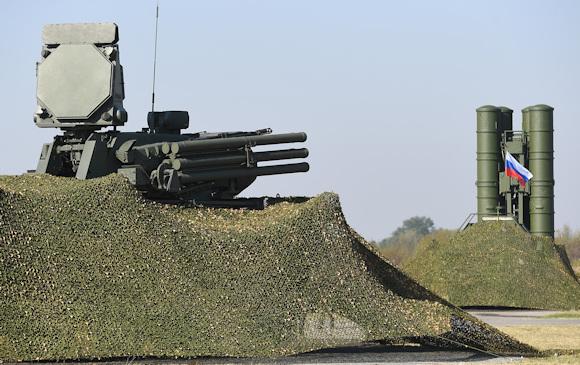Modern air defense systems have had a very high degree of evolution, thanks to the application of increasingly sophisticated information technologies and, in the case of Russia, thanks also to the possibility of experimenting the systems themselves "on the field" on theaters such as the Syrian one, revealing their strengths and vulnerabilities. It currently appears reductive to speak of "Antiaircraft Defense", while it makes sense to indicate this operational function as Integrated Air Defense System, defined within NATO as Integrated Air Defense System (IADS).
A modern IADS, therefore, is much more complex than a single SAM battery (Surface Air Missile - Ground-to-Air Missile) or its command vehicle and associated radar. Analysts and operational planners should strive to use common language when discussing IADS and incorporate this knowledge in order to carry out effective planning to neutralize these complex systems, in accordance with what is established by the "mission". If you understand this concept, you understand the need to develop plans oriented towards integrated operations on multiple domains.
First of all, it is necessary to be clear what is meant by IADS; according to an expert of intelligence of the air force we can indicate it as "the structure, equipment, personnel, procedures and weapons used to counter the aerial penetration of the enemy into their claimed territory". Rather than a single weapon or person, it is the fusion of multiple elements, organized to minimize threats in the air domain.
An effective IADS performs three functions: aerial surveillance, battle management and weapon control. Of these, we want to draw attention to "aerial surveillance", which includes five specific sub-functions: detect, initiate, identify, correlate and maintain.
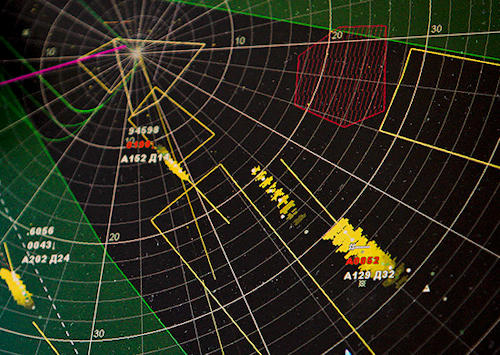 Air surveillance is often described as "the eyes" of an air defense system. A radar "detects" an aircraft that enters an area covered by IADS, while the "start" function transforms the signals captured by the radar into "tracks". The "identification" function examines the track and classifies what has been identified as friend, enemy or unknown.
Air surveillance is often described as "the eyes" of an air defense system. A radar "detects" an aircraft that enters an area covered by IADS, while the "start" function transforms the signals captured by the radar into "tracks". The "identification" function examines the track and classifies what has been identified as friend, enemy or unknown.
These three phases occur relatively independently and therefore a "correlation" function is required. For example, if a system identifies three closely spaced tracks, a sensor operator has the option of considering the tracks as a single entity or as three different aircraft. Correlation is important as it can have a significant impact on the weapons to be used. Lastly, the "keep" function is oriented towards the continuous monitoring of the track identified.
The development of IADS in Russia
The Russian doctrine for the use of the Ground Forces establishes that the Air Defense units have the task of protecting the troops and the means against a variety of means suitable for the conduct of air attacks: from the aircraft for the attack on the ground, to the cruise missiles, to UAVs, in all circumstances, both in combat situations, whether they are in running gear or sedentary. To carry out this task, Russian Air Defense units are called upon to manage a complex and varied system of interventions which include air combat, the detection of opposing aircraft with the simultaneous warning of troops on the ground, the destruction of air attack vehicles. enemies, as well as the setting up of adequate support for defensive theater missile systems. The advantage offered by a diversified defense system coordinated by a single command allows to appropriately "calibrate" the weapons to be used for the engagement of an enemy aircraft. This allows you to avoid, for example, wasting a missile on destroying one target of secondary importance, when a smaller volume of fire, suitable for its neutralization, would be sufficient.
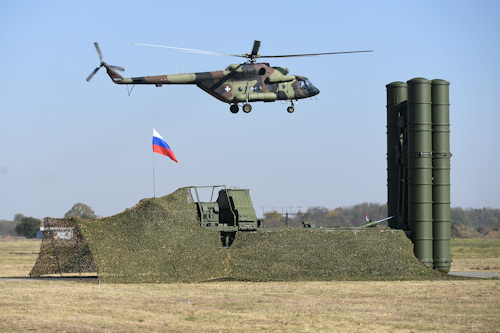 Consider, first of all, the Russian SAMs. These are distributed to all military installations in the country and what makes a given system tactical or strategic is the nature of the target or area that the SAM is defending. From a tactical point of view, these systems normally placed in defense of other elements of high tactical value (High Value Targets - HVTs), in turn can be considered high profile objectives and, in certain circumstances, could even represent the "center of gravity" of an array.
Consider, first of all, the Russian SAMs. These are distributed to all military installations in the country and what makes a given system tactical or strategic is the nature of the target or area that the SAM is defending. From a tactical point of view, these systems normally placed in defense of other elements of high tactical value (High Value Targets - HVTs), in turn can be considered high profile objectives and, in certain circumstances, could even represent the "center of gravity" of an array.
In general, the elements to be considered as "centers of gravity" are identified by their belonging to the command and control structure (C2) of a unit and the mission assigned to it. This concept is fundamental since the missile systems S-300, S-400 (photo) and S-500 have a very high range: in the case of the more modern S-500s, they reach 600 km; on the other hand, most Russian air defense systems are short and medium range. Here then that the target engagement distance becomes the parameter that determines the structure of an IADS: in the presence of a generic air threat, in an integrated system composed for example of SAM S-400 batteries, SU-35 “Flanker aircraft "And Pantsir-S anti-aircraft systems, the S-400 batteries will most likely represent the defensive" first line "of a Russian IADS. The S-400 system has its own aerial surveillance capabilities, battlefield management and engagement functions. A single S-400 that works independently, however, is unable to provide air defense alone and, above all, to guarantee its own safety. Here then emerges the role of the Pantsir-S1 in the integrated defense system. In this context, this short-range anti-aircraft system contributes to the general defense of the area and, in particular, it rises to the role of defender of the other system, mitigating its vulnerability.
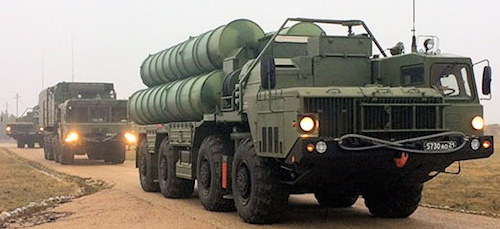 A system like the SAM S-400 should not be viewed simply as a conveyor-ramp-launcher or as a single radar. The Russians themselves describe the S-400 as consisting of a battle management system, six separate SAM systems, maintenance facilities and other components. For the S-400 system to be able to operate, at least seven vehicles are needed, not to mention the vehicles for the C2 activities, the generating sets, the fuel tanks, the engineering equipment, the means for transporting the support staff and systems for the defense of the system itself.
A system like the SAM S-400 should not be viewed simply as a conveyor-ramp-launcher or as a single radar. The Russians themselves describe the S-400 as consisting of a battle management system, six separate SAM systems, maintenance facilities and other components. For the S-400 system to be able to operate, at least seven vehicles are needed, not to mention the vehicles for the C2 activities, the generating sets, the fuel tanks, the engineering equipment, the means for transporting the support staff and systems for the defense of the system itself.
Therefore, an S-400 is only one component of a series of systems that make up the IADS. There may be one or more S-400 missiles in an IADS, depending on the mission or area to be defended. The principle behind IADS, in any case, is that different weapons, with different performances, are connected to each other, creating a unicum operational in which the integration provides added value, so the system guarantees an effectiveness superior to that of the individual weapons that make it up. Just the aforementioned systems S-400 and Pantsir-S1, already represent a consolidated model of IADS. A superficial analysis would suggest that these are only two systems that work closely together. Actually Pantsir and S-400 are part of an integrated system. According to the indications of Rosoboronexport, a Russian company leader in the arms manufacturing sector, the Pantsir-S1 is often used to strengthen air defense groups when mass air strikes are to be repelled.
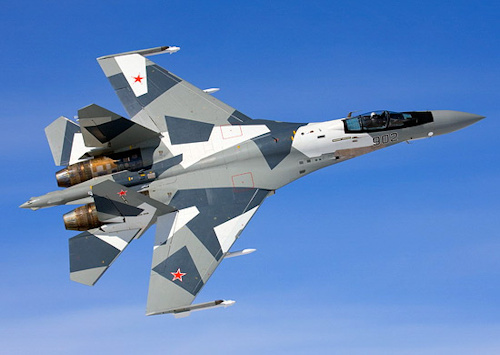 Systems such as S-400 missiles or Pantsir are designed for air defense, but other elements, such as Su-35 "multirole" fighters (photo) or "Fulcrum" MiG-35s, can be used alongside them, for air defense as interceptors. The same can be said for electronic warfare apparatuses, which can directly or indirectly influence air operations and support air defense.
Systems such as S-400 missiles or Pantsir are designed for air defense, but other elements, such as Su-35 "multirole" fighters (photo) or "Fulcrum" MiG-35s, can be used alongside them, for air defense as interceptors. The same can be said for electronic warfare apparatuses, which can directly or indirectly influence air operations and support air defense.
The philosophy of "air defense", therefore, indicates the functional characteristics of an IADS from the point of view of the development of the targeting and helps to understand what a specific system is capable of and how it fits into a system targeting wider.
Ultimately, following the example above, we can say that an IADS structure does not allow a Su-35, an S-400 and a Pantsir-S1 to simultaneously engage a single threat, but allows each system to manage multiple seamless threats. This solution is obtained through the "redundant" use of the most advanced means of communication available: satellite communications, 4G and 5G cellular networks, public telephone networks, Wi-Fi networks, cloud computing and other. The modern range of communication networks not only allows for redundancy, but also allows the continuous passage of data, regardless of the level of units or the scope of the control. Thinking about an IADS structure in terms of "linear" or "hierarchical" interaction, therefore, would be reductive and would not allow us to grasp the correct representation of the interoperability of the units at the tactical level with those at the higher levels.
The spread of Russian IADS abroad. The exercise Slavic Shield 2019
The Syrian operating theater offered a great opportunity for Russia to experiment with the IADS model described above, consisting of S-400 launchers flanked by Pantsir-S1 systems. In fact, the air bases and other sites deemed to be of strategic value have seen the aforementioned systems for integrated air defense deployed. What currently arouses the greatest interest, however, is the potential spread of this defense model among countries that traditionally, in a global geopolitical framework, gravitate to Moscow's orbit.
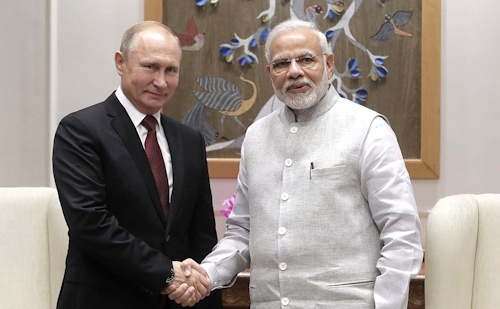 In the fall of 2018, for example, Indian Prime Minister Narendra Modi and President Putin signed an agreement for the sale of five S-400 systems to India, for an expense of 5,4 billion dollars. India has signed the agreement despite the United States having warned that any country that trades with the defense andintelligence Russians would be automatically hit with sanctions under US law known as CAATSA.1 Indeed, by supporting the priorities of its national interest, the Indian government has reaffirmed the solidity of the relations established with the Kremlin, declaring its intention to acquire more technology from Russia, expressly referring to the purchase of "Kamov" helicopters.
In the fall of 2018, for example, Indian Prime Minister Narendra Modi and President Putin signed an agreement for the sale of five S-400 systems to India, for an expense of 5,4 billion dollars. India has signed the agreement despite the United States having warned that any country that trades with the defense andintelligence Russians would be automatically hit with sanctions under US law known as CAATSA.1 Indeed, by supporting the priorities of its national interest, the Indian government has reaffirmed the solidity of the relations established with the Kremlin, declaring its intention to acquire more technology from Russia, expressly referring to the purchase of "Kamov" helicopters.
India, however, is a reality far from us. Less distant is Serbia, a nation in which the joint exercise between Russia and Serbia called Slavic shield 2019. This exercise, which took place for the first time, was developed in two phases: the first took place in September at the Russian Aerospace Force Combat Training Center in the southern Astrakhan region; the second phase saw the teams of an S-400 air defense system and a Russian Aerospace Forces anti-aircraft battery of Pantsir-S, together with the Neva-M1T and Kub-M surface-to-air missile systems of the Serbian Air Force . The exercise was aimed at evaluating aspects related to interoperability between the air defense forces of both countries.
Serbian President Aleksandar Vučić, accompanied by Defense Minister Aleksandar Vulin and the chief of staff of the Serbian Armed Forces, Lieutenant General Milan Mojsilović, visited the command post of the exercise, where he was able to see the radar image of what was happening in the airspace. The visit was also attended by Major General Duško Žarković, commander of the Air Force and Air Defense, members of the Serbian Ministry of Defense and Armed Forces, as well as Major General Sergey Viktorovich Babakov, Commander of Russian Air Defense and Colonel Andrey Vyacheslavovich Dugin , representative of the Air Defense Center of the "Zhukov" Military Academy.
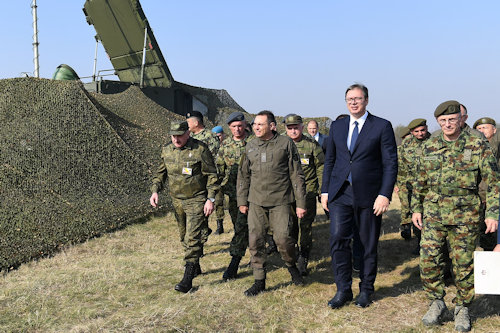
The emphasis placed by the Serbian political and military personalities present on the exercise, possession and use of these weapon systems is particularly interesting. First of all, President Vučić who, at the end of the activity, participated in the Distinguished Visitors Day held at the Air Force Base "Pilot Colonel Milenko Pavlović" in Batajnicaha.
He stressed that the availability of the S-400s represents an extraordinary guarantee against any aggression coming from the sky: "As for the S 400, if we had two S-400 battalions, nobody would dare fly over Serbia or even think of flying over Serbia". The president then said he was sorry not to have this missile system - too expensive - in his Armed Forces and, however, proudly communicated the purchase of a Pantsir-S1 system (photo), of which he enhanced the accuracy in the engagement and killing of enemy aircraft, effective in 95% of cases. President Vučić also expressed surprise in seeing the power and precision of the S-400s, declaring that he had never seen such a thing in his life, even when he was in strategic military airports in the Moscow area.
Finally, the deputy commander of the Russian Aerospace Forces, Lieutenant General Yury Nikolayevich Grehov, delivered a copy of the Pantsir-S1 system to President Vučić.
The availability of Pantsir-S1 systems (photo below) should not be underestimated; we must not forget that, regardless of the effectiveness shown by the system itself, this represents the "natural" defense of much more dangerous systems. We must ask ourselves whether Serbia, in the not too distant future, could also dispose of the latter.
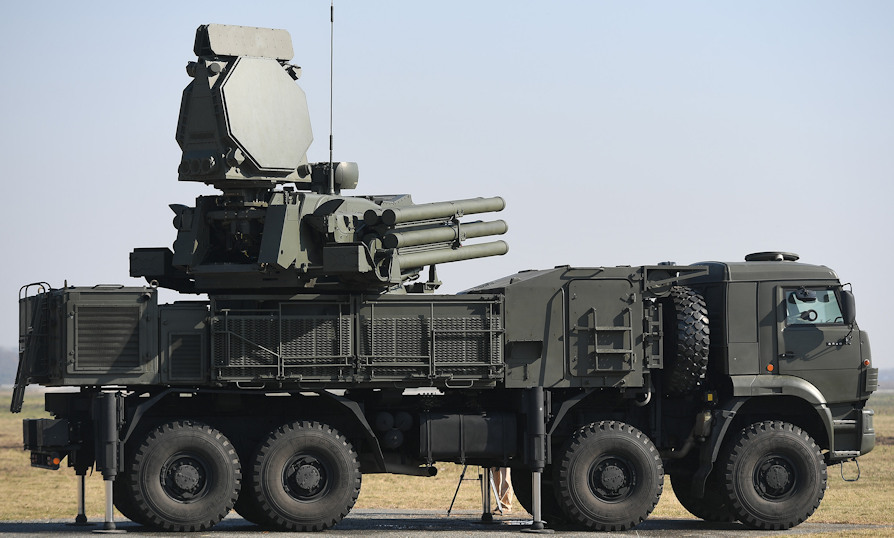
References:
- "We are not a vassal state." India challenges US sanctions to buy Russian S-400s, the Anti-diplomat, 08/10/2018. https://www.lantidiplomatico.it;
- Mattes PW, What is a Modern Integrated Air Defense System?, Air Force Magazine, 01-10-2019. https://www.airforcemag.com;
-
Vučić: We are drastically boosting our military capabilities, 25/10/2019. http://www.vs.rs;
-
Russia and Serbia have wrapped up their Slavic Shield-2019 joint drills using S-400, Russian Aviation, 29/10/2019. https://www.ruaviation.com.;
-
Russia, Serbia Follow 'Slavic Shield' With Second Joint Military Drill, The Moscow Times, 01/11/2019. https://www.themoscowtimes.com;
- Vucic buys Moscow anti-aircraft missiles. NATO fears, La Stampa, 07/11/2019.
1 Il Countering America's Adversaries Through Sanctions Act (CAATSA), is a United States federal law aimed at imposing sanctions on Iran, North Korea and Russia, considered enemy states.
Photo: author / MoD Russian Fed / Kremlin

